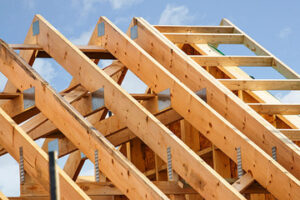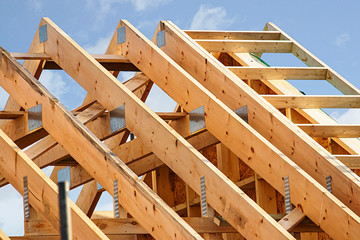Cedar Park Roofing is a common element of the structures that make up many businesses. Commercial roofing contractors can install a variety of materials for these roofs.
The most common are flat and low-sloped. Examples include tar-and-gravel, BUR, and single-ply membranes such as PVC and TPO.
These types are lightweight and highly reflective. They also resist punctures, tears, bacterial growth, and oil and fats.

Metal is commonly used on commercial buildings for its durability and long lifespan, but it is also becoming more popular in residential homes because of its aesthetics. There are many different types of metal roofing materials available based on the type of panel, thickness of steel, cost, and other factors. While these types of roofs are typically more expensive than other roofing materials, they can last for a lifetime and require little maintenance.
Most people have seen metal roofs on barns or other agricultural structures, which usually use corrugated panels with exposed fasteners for a rustic appearance. While this is fine for a machine shop or cattle barn, it leaves something to be desired in a home. However, the roofing industry has taken a page from vinyl flooring manufacturers and has created panels that imitate the look of wood, slate, and clay. These new styles have reinvigorated the metal roofing industry and made it more popular than ever before.
Whether you choose a galvanized, aluminum, or copper roof, all metal roofing starts out as a coil or sheet of metal that is treated and then formed into panels for installation on a structure. These panels can then be connected and seamed together to form the complete roofing system. The metal can be painted in a variety of colors and is often coated with a waterproof sealant.
While the initial costs are higher for a metal roof than an asphalt shingle, these roofs can last for more than 100 years if they are well maintained. They are rust-resistant and can develop a lovely colored patina over time. Additionally, metal is a green roofing option since it can be recycled at the end of its life cycle.
While you can purchase a metal roof yourself from a roofing supply store or distributor, it is highly recommended that you have an experienced contractor install it. A poorly installed metal roof can leak or become dented and cause damage to the underlying structure of the building. Performing a metal roofing job on your own can be dangerous and is not recommended.
asphalt shingles are the most popular roofing material. They are found on four out of five homes and offer a combination of beauty, durability and value that appeals to homeowners. The most common type is the three-tab shingle, so named because it has cutouts forming three single tabs. Also commonly used are dimensional and premium shingles, the latter of which often mimic the look of high-end roofing materials like slate or cedar shakes.
The shingles are manufactured by compressing layers of tar, fiberglass and mineral granules to create a sturdy waterproof barrier that withstands the sun’s ultraviolet rays and the rainy weather of climates. Many shingle manufacturers offer a wide selection of colors, allowing homeowners to choose a shade that works with their home’s color palette and architecture.
Depending on the manufacturer, the shingle’s base may be made from either organic felt (cellulose fibers) or inorganic materials like glass fibers. The organic mat is saturated and coated with asphalt, while the inorganic base has a ceramic-coated, opaque mineral granule coating. The granules give the shingle its color, and help protect it from fire, hail, ice and wind-driven debris.
Shingles can be used on roof slopes of two units vertical in 12 units horizontal (17% slope) or greater. A minimum of 12 gallons per square foot of water-resistant underlayment should be installed over the sheathing, along with flashings and valley metal.
Asphalt shingles are rated by their wind resistance and can withstand up to 130 mph winds when properly installed. Some shingles are designed to withstand higher wind speeds and are offered with high-wind limited warranties.
While shingles are easy to install, it’s always best to hire an experienced roofer for any roofing job. The roofer will ensure that the shingle underlayment is securely fastened to the sheathing, and install the flashings and valley metal. He or she will then install the shingle and apply an asphalt sealant to the edges. Shingles are susceptible to moss and algae growth, so it’s important to perform routine maintenance on your shingle roof. A yearly inspection and cleaning is recommended to prevent moisture intrusion and promote long life.
EPDM is an excellent choice for commercial flat roofing. It’s extremely durable, and it resists heat, moisture, ozone, and UV radiation, which makes it an ideal roof material for different climates. It also has great elasticity and tensile strength, making it very tough.
Another benefit of EPDM is its low maintenance costs. It’s relatively easy to clean and will only need a paint job every decade or so. It’s a good option for customers who are looking for a cost-effective and long-lasting roof solution.
EPDM membranes can be installed quickly, and they’re also easier to repair than other roofing materials. However, it’s important to note that this type of roof requires skilled installation and proper maintenance. A sub-par installation can shorten the lifespan of an EPDM roof significantly.
The most common application for EPDM is on rubber roofs, which typically cover commercial buildings. It’s also used for awnings, garages, and car parks. This type of roof is also common on industrial buildings, as it provides an effective and affordable barrier against weather and sunlight.
Although EPDM is a good choice for commercial roofs, it’s not the most aesthetically appealing roofing material. This is because it doesn’t have a natural appearance. It’s essentially a large sheet of black or white rubber, and it can be an eyesore on certain types of buildings. However, it’s important to note there are a number of ways to improve the look of an EPDM roof.
One of the most common ways to improve the look of an EPDM is to use a coating or screen print. However, this will be more expensive and may not provide the best aesthetic result. Another disadvantage of EPDM is that it can pond water if it’s not properly installed. This can lead to rot, mold, and structural damage.
During the fitting process, a professional will straighten and spread an EPDM sheet over your roof. This will help to ensure the membrane is properly positioned and that it’s free of any wrinkles or air pockets. Then, it’s time to start the glueing and trimming process. This step must be done with care, as it’s vital to ensure the membrane is completely sealed and waterproof. It’s also essential to allow the rubber enough time to relax back to its neutral state.
TPO stands for thermoplastic polyolefin, which is a popular single-ply membrane that commercial roofing contractors use. It is a type of polymer that has become increasingly popular in the roofing industry for flat roof designs, as it offers several benefits over more traditional roofing materials. TPO membranes are typically fastened mechanically or ballasted to the roof surface, and they are usually affixed to a layer of insulation. A TPO roof can last between 15 and 20 years, or even more, with proper roofing maintenance.
When selecting a TPO roofing material, it is important to talk with a professional roofing contractor who has extensive experience in working with this type of roof. Commercial roofing is a sizeable investment, and a well-constructed roof will protect the interior of your building from water damage and other common issues. You want to ensure that your roofing system will last a long time and stand up to the elements.
One of the biggest advantages of TPO is its resistance to UV rays, which helps reduce your energy costs in the summer. This type of roof also features a reflective surface, which can help you save on cooling costs by reflecting the sun’s heat away from your building. In addition, TPO is an environmentally friendly roofing option that is a great choice for commercial buildings that discharge oil and grease through the ventilation system.
Another benefit of TPO is its ability to withstand high thermal and solar loads. However, it is important to note that if your building is in an area that regularly experiences high temperatures and high levels of sunlight, this type of roof may not be suitable for your facility. It is also important to keep in mind that TPO is not suitable for sloped roofing systems, as this can cause water to enter the insulation and lead to leaks.
The main disadvantage of TPO is that it can deteriorate over time, especially in warmer climates. It can be difficult to maintain a TPO roof in these conditions, and this can lead to the need for frequent repairs. It is recommended to use a highly-experienced roofing contractor who can perform infrared inspections to check for leaking areas of your roof and make recommendations accordingly.
